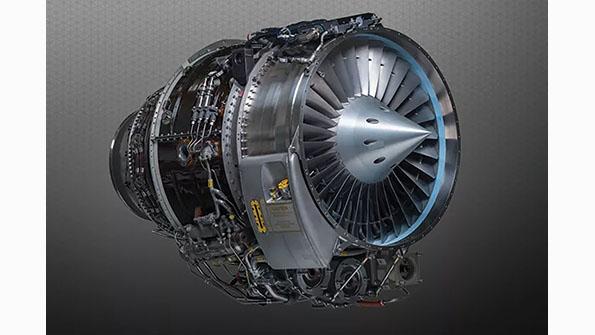
When the Smithsonian National Air and Space Museum set about renovating its downtown Washington facility—one of the most visited museums in the world—it was decided to reconsider the general aviation display to better encompass the sector’s variety, impact and technological advances. And thus at the West Wing’s reopening in October, its “We All Fly” exhibition appropriately included a prototype Learjet 23, the Cessna 180 that “Jerrie” Mock soloed around the globe in 1964, and Sean Tucker’s unique, eight-aileron, twin-wing aerobat.
But also featured were significant technologies including a multiscreen, integrated Garmin avionics system, Cirrus airframe parachute and Ivan Speer’s two-spool, geared marvel, the TFE731.
- The TFE731 is derived from an APU
- Transcontinental range
- 13,000 produced and counting
Some background. When business jets debuted in the early 1960s, they relied on turbojet engines adapted from military applications. While those got the job done, they were ear-piercingly loud fuel guzzlers requiring frequent pit stops. By the decade’s close, airframers wanted a new-generation, fuel-efficient mill that could cross the U.S. nonstop and satisfy airports demanding that turbojet cacophony be quieted.
Given those conditions, Speer, who managed Garrett Corp.’s Phoenix engine operation, had an idea. Garrett manufactured the TPE331 turboprop and was well-known for its auxiliary power units (APU). He speculated that APU technology the company had developed for widebody jetliners could be applied to a compact, quiet, fuel--efficient turbofan engine to serve this emerging segment of business aircraft.
To help substantiate his premise, he assembled a team that began running computer simulations to define an appropriate powerplant. Based on the results and overall market conditions, in April 1969 he made a presentation to the board and got a go-ahead—with one condition: He first had to convince three airframers to commit. By the end of the following month, Swearingen had signed for its ill-fated SA-28T, Lear for what became the Model 35 and Dassault for its Falcon 10. What was to become the TFE731 was a “go.” And it is still going.
Speer’s Garrett gang of eager engineers set to work with impressive alacrity. They powered up their first prototype, rated at 2,700 lb. thrust, in September 1970 and had one flying by the following May. The engine’s progression, however, was not without setbacks. In September 1971, the engine failed a 4-lb.-bird-ingestion test, forcing a major redesign of parts and material. Despite that, on Aug. 31, 1972, the FAA presented Speer and team with full certification of the turbofan, by then upgraded to 3,500 lb. thrust, and business aviation entered a new era. A footnote: Years later, the effort was validated when a TFE731-powered aircraft “swallowed” a 12-lb. goose and still made it home safely.
Business aviation’s eagerness for Garrett’s gamble was confirmed by the applications that followed the Lear 35 and Falcon 10: British Aerospace BAe HS125-800 (Raytheon Hawker 700, 800); Cessna Citation III, VI, VII; Dassault Falcon 100, 50, 900, 20 (retrofit); Israel Aircraft Industries Westwind I/II, Astra (Gulfstream G100, G150); Lear 31, 36, 40, 45, 55, 70, 75; Lockheed JetStar II; and Sabreliner 65. The engine was eventually certified on 34 different civil and military aircraft and produced in 80 configurations. By the end of the 1980s, the TFE731 powered the majority of business jets.
Then retired, Speer surely took special pride and satisfaction in 2001 when the 10,000th TFE731, a -20AR version destined for a Learjet 45, was delivered. Regarded by many as the “father of the 731,” the 81-year-old engineer and World War II veteran “flew west” the following year.
Engine deliveries continue and have passed the 13,000 mark. And although production ended for most TFE-powered jets as 21st-century models succeeded those of the 20th, some 9,400 engines are still in service. The very last of the Lears, a TFE731-powered Model 75, was delivered just this past March, and Dassault continues to produce its Falcon 900LX, notably powered by a trio of TFE731-60s, each rated at 5,000 lb. thrust.
As the engine, now produced by Honeywell, Garrett’s ultimate corporate successor, begins its second half--century, its future looks promising. The company is confident that the TFE731 can be upgraded to operate solely on sustainable aviation fuel, whereas now there’s a 50% limitation. But beyond that, Hans Laudon, Honeywell vice president for engines, recently told Aviation Week & Space Technology sibling publication ShowNews that developers of uncrewed air vehicles are interested in the TFE731 and that “the next 10-15 years are looking solid.”
So the engine that the Smithsonian says “led the trend toward medium-size corporate fanjet aircraft” 50 years ago may serve to power yet another evolving category of aircraft.





